
On Monday 1st February 1858, the L.B.S.C.R. introduced the first slip coaching working when the 4.00 pm. London Bridge to Brighton running non stop between East Croydon and Brighton slipperier coaches for Lewes and Hastings at Haywards Heath. The working timetable contained the instructions.
Before leaving London Bridge the head guard of the Hastings part must see that it is properly secured with the patent coupling, and that side chains are not coupled, but hung up. He must also see that his rope connection with the Brighton under guard is properly connected.
On arriving near the Haywards Heath distant signal, the speed being considerably slackened, the head guard of the Hastings part will first detach his rope communication from the Brighton train, then his coupling, seeing which properly effected the under guard of the Brighton train will give hand signal to the driver to proceed. The head guard of Hasting train will then brake it gently, and not too suddenly, up to the station platform. In case anything should prevent the detaching, the guards must give a stop signal to the driver, who must stop at the station.
The slipping of coaches was a feature on the L.B.S.C.R. services over many years with carriages regularly being slipped at such places as Arundel, Ashurst, Barnham, East Croydon, Haywards Heath, Horley, Polegate, Preston Park and Sutton. The slipping of coaches at Three Bridges did not commence until the 1st October 1927
The practice of slipping coaches on the Brighton Railway and on the Southern Railway continued until 30th April 1932. The slipping of coaches was ended due to the increase in weight of trains owing to the improvements to the rolling stock, the extension electrification and the installation of colour light signalling of the Brighton main line.
The last train to be slipped was the 5.20 Victoria to Eastbourne on Saturday 30 April, 1932 with a slipping the Forest Row portion at Three Bridges. The train was worked by Driver Porter of Battersea whilst driving engine (former SECR) K Class No.790 ‘River Avon'. This portion was then worked forward to Forest Row by Three Bridges driver Medhurst who was driving engine E4 Class No.2512 (originally Kingswood).
THE RAILWAY REVIEW
20TH MAY 1887
The London, Brighton, and South Coast Railway when working trains that involved Slip carriages, the train brakes worked was by using the Westinghouse Automatic Brake. This was for the purpose of preserving the continuity of the brake on the slip carriage, and the electric communication between the driver and guard. The slip van was fitted that the guard had full power over the slipped portion, and could control the movements of the carriage by means of a driver's valve, even when the train had gone on its journey. This could not be be done with the vacuum brake, because once the guard opened his valve on his brake, there he would stop as there was no means of recreating the vacuum brake
Railway accidents on the
L.B.S.C.R.
from http://www.railwaysarchive.co.uk
New Cross on 5th February 1858
no mention of Enginemen
SEE SUB PAGE
Caterham Junction on 8th February 1858
no mention of Enginemen
SEE SUB PAGE
The Power Of The Naked Flame
On the morning of the 8th February, 1858, the local air temperature at Caterham Junction was only 16-F. 'Sharp Brothers Singles' Engine No. 37 was leaving London Bridge at 6 a.m., with the Brighton Parliamentary train, (this train was assisted from the rear up New Cross bank, by a 'R. B. Longridge & Co. Goods loco.' No. 101. No. 37, stopped at Caterham station with both safety valves gently lifting. A few moments later the firebox collapsed with an enormous explosion, which killed the fireman instantly, but left the driver untouched, although quite naked except for his working boot and socks.
Railway accident on the
L.B.S.C.R.
from http://www.railwaysarchive.co.uk
Three Bridges 12th April 1858
no mention of Enginemen
SEE SUB PAGE
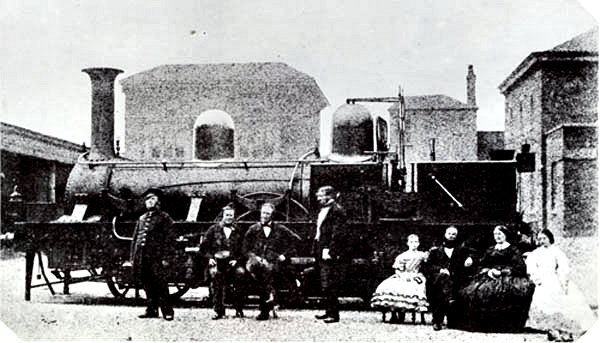
PHOTOGRAPHER UNKNOWN
Engine Driver Sam Fry standing next to a John Chester Craven’s Locomotive No.12,
photographed at the Lover's Walk Railway Depot, Brighton in May 1858.
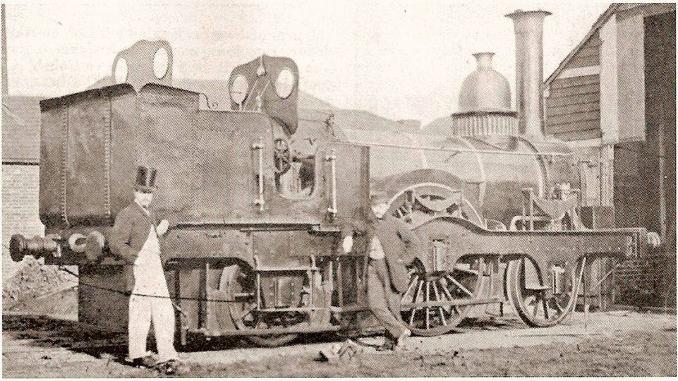
UCKFIELD LOCO SHED 1858-1868
Uckfield locomotive shed was opened on 18th October 1858 by the London, Brighton & South Coast Railway. The shed was located in the vicinity of the station and was a one track straight shed. The shed closed on the 3rd August 1868.
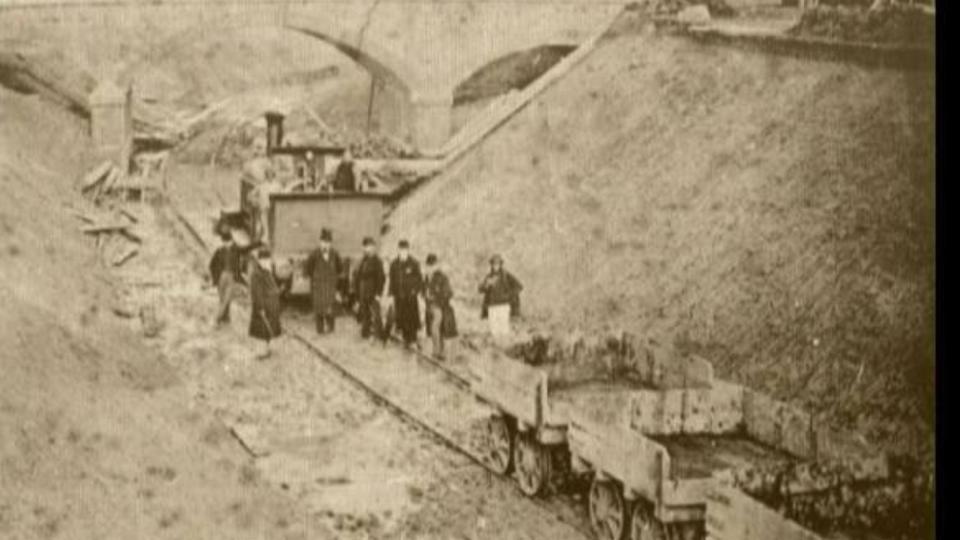
HAILSHAM LOCO SHED 1858 - 1880
Hailsham Locomotive Shed was opened in 1858 by the London, Brighton & South Coast Railway. The shed was Located on the east side of Hailsham station and was a brick built one track straight dead-ended shed with a gable style slate roof. The shed was to close in 1880.
ENGINEMENMEN AT HAILSHAM
ACCORDING TO THE 1861 & 1871 CENSUS
EXTRACTED & ADAPTED FROM THE BRIGHTON CIRCLE WESITE
The 1861 census shows no signalman and Polegate simply had a “switchman”, by the 1871 census shows two signalmen resident in the parish, one living in Polegate and the other in Otham (near Polegate). There was a small signalbox at Hailsham at that this time.
The 1861 shows there a driver (lived in Eastbourne Rd.), a fireman (lived near Common Pond, Hailsham), a fitter, a guard (lived in Eastbourne Rd.), three clerks, an inspector (at Polegate), three labourers, four porters, and two telegraph clerks (presumably Railway; both lived in Polegate).
In 1871 census shows a driver (lived in Eastbourne Rd.), two fireman (presumed railway; both lived Eastbourne Rd.), a guard (Cobden Place, by Station Rd. Hailsham), two clerks, three labourers, two plate layers, six porters, two station masters (one in Railway Cottage, Eastbourne Rd.; the other at Polegate Station) and the telegraph clerk who was the signalmen’s son living in Otham, near Polegate. It appears that train crew were resident in Hailsham by 1861.
HAILSHAM ENGINEMEN 1877
INFORMATION FROM RECORDS HELD AT KEW ARCHIVES
DRIVERS
Edward Jackson aged 59 & Thomas Hafoull aged 52
FIREMEN
Albert Smith aged 26
William Davis aged 32
Cleaners
Alfred Bryant aged 19
William Street aged 21
HAILSHAM ENGINE SHED AND RAILWAY SERVICES 1858 - 1880
EXTRACTED & ADAPTED FROM THE BRIGHTON CIRCLE WESITE
During the late 1850s and the early 1860s, there were 10 to 11 trains a day with 7 trains on a Sunday. All trains were passenger trains, and from 1864 that goods wagons could be attached to any service. There was also an extra train on market day (alternate Wednesdays) which originated in Brighton to take passengers and cattle; it was timetabled to run up the branch while the Hailsham train was held at Polegate. The weekday services started and finished the day at Hailsham.
From 1867 only, the first two trains of the day were permitted to have goods attached. During the winter of 1866/7 a specific goods service was introduced which departed Hailsham in the early evening and returned just thirty minutes later, having exchanged its wagons at Polegate. The locomotive was then allocated to the next passenger service. The goods service was short-lived, being withdrawn later in 1867. By 1872 the market day service was no longer listed in the branch timetable.
By 1878 a two way goods service had been reinstated. The Hailsham loco started the day with a return passenger service to/from Polegate. That was followed by a return goods service. The following two morning services left Hailsham with passenger stock but on the return they were permitted to have goods attached. The last morning service was passenger only but upon arrival at Polegate, the loco was then used to work wagons between Polegate and Gosden’s Sidings. The loco then resumed passenger workings, completing a further four trips to Hailsham where it remained overnight.
After the northern extension of the line in 1880 there were still some “short” workings from the south which terminated at Hailsham in the old manner, and on weekdays these continued to start and end the day at Hailsham, i.e. the locomotive shed was still being used to stable a locomotive overnight. Again, two workings a day were permitted to take goods as well as passengers. Once again a dedicated goods working was introduced but as a one way shuttle; a light engine left Hailsham at 07.15 and arrived back at 08.25 with goods from Polegate; all outward goods either left on the through goods workings or attached to the two permitted passenger-goods workings.
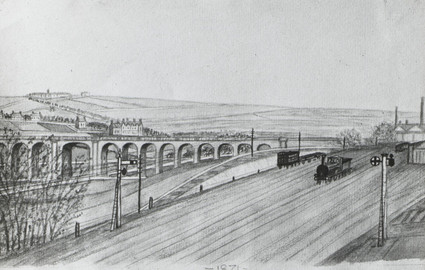
PHOTOGRAPHER UNKNOWN
LOVER’S WALK
Railway accident on the
L.B.S.C.R.
from http://www.railwaysarchive.co.uk
Brighton Terminus on 27th November 1858
no mention of Enginemen
SEE SUB PAGE

BATTERSEA (PARK) LOCO DEPOT
1858 - 1934
Extracted and adapted from
The Survey of London by the English Heritage.
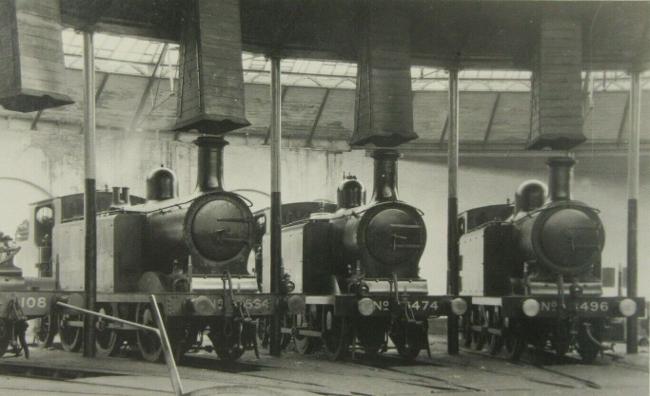
Battersea Park Loco was one of the L.B.S.C.R.’s main London depots and its origins of the loco shed can be traced back to 1858.
Battersea Park Depot grew out of the original plans of the West End London & Crystal Palace Railway for a terminus on the south side of the Thames, just east of Chelsea Bridge. After the first railway bridge to Victoria was completed in 1860, the short-lived terminus building of 1858 and its environs were retained for non-passenger uses by the L.B.S.C.R. A freight depot was opened in April 1862, the terminus building adapted as a carriage shed, and a small timber goods shed added to its north by the contractor John Perry in 1866.
By the 1890s the carriage shed had disappeared in favour of open sidings for the L.B.S.C.R., while later, probably in the Edwardian years, the goods shed was replaced on an enlarged scale. The open expanse at the river end of the site became known as Battersea Wharf. The water frontage affording facility for discharging cargoes of goods for and from all parts of the Brighton, South-Eastern, London, Chatham and Dover Railways. The traffic during the last ten years has very sensibly increased.
Further south, a rare set of structures emerged in connection with the LBSCR’s Battersea Loco Depot, known later under the Southern Railway as Battersea Park Depot. The W.E.L.C.P.R. had in 1858 built a small timber engine shed south of their terminus. This was inadequate for the L.B.S.C.R. once Victoria was in active use. But no replacement was possible until the high-level lines of the Battersea Tangle had been completed. The new locomotive accommodation as finally undertaken took the configuration off connected roundhouses.
The original pair of roundhouses, on a diameter of about 180ft each, was built between 1868–70. First came the northern roundhouse west of the viaduct, known as the Middle Shed; it was immediately succeeded by the East London Shed, whose circumference was enlarged by means of side wings and connected with the Middle Shed under the elevated viaduct. Some two dozen roads in each roundhouse, with pits beneath for servicing and repairing locomotives, faced a central turntable of 45ft diameter. Many of the locomotives kept here were short tank engines, some 80 could fit in the two roundhouses and yards outside.
Their structure consisted of plain external brick walling pierced by round-headed windows, and an internal ring of tall cast-iron columns. On these sat doughnut-shaped roofs, pitched round the circumference and conical in the middle, where spanning trusses of iron were connected to a central column. The wings of the eastern shed were covered with pitched roofs. The lighting, via skylights and clerestories, was generous.
Because of increasing traffic a third roundhouse was added in 1889–90 south of and linked to the western shed. Its diameter was slightly larger, at about 200ft, but again it had 24 roads. A small office was added south of this ancillary shed in 1913, replacing earlier offices in a railway arch. The depot was sealed off by an impressive brick wall, probably of about 1900, which ran along Queenstown Road’s east side.
Battersea Loco was largely an engine running shed; all new fabrication and major repair work for the L.B.S.C.R. were undertaken at Brighton, though so staff here as ‘upwards of 300 hands’ in about 1879.
The depot lost work and status after the Southern Railway was created in 1923 and the main line from Victoria to Brighton then electrified. It closed in 1934, when remaining locomotives and work being transferred to neighbouring South Eastern shed at Stewart’s Lane.
Battersea Park Depot grew out of the original plans of the West End London & Crystal Palace Railway for a terminus on the south side of the Thames, just east of Chelsea Bridge. After the first railway bridge to Victoria was completed in 1860, the short-lived terminus building of 1858 and its environs were retained for non-passenger uses by the L.B.S.C.R. A freight depot was opened in April 1862, the terminus building adapted as a carriage shed, and a small timber goods shed added to its north by the contractor John Perry in 1866.
By the 1890s the carriage shed had disappeared in favour of open sidings for the L.B.S.C.R., while later, probably in the Edwardian years, the goods shed was replaced on an enlarged scale. The open expanse at the river end of the site became known as Battersea Wharf. The water frontage affording facility for discharging cargoes of goods for and from all parts of the Brighton, South-Eastern, London, Chatham and Dover Railways. The traffic during the last ten years has very sensibly increased.
Further south, a rare set of structures emerged in connection with the LBSCR’s Battersea Loco Depot, known later under the Southern Railway as Battersea Park Depot. The W.E.L.C.P.R. had in 1858 built a small timber engine shed south of their terminus. This was inadequate for the L.B.S.C.R. once Victoria was in active use. But no replacement was possible until the high-level lines of the Battersea Tangle had been completed. The new locomotive accommodation as finally undertaken took the configuration off connected roundhouses.
The original pair of roundhouses, on a diameter of about 180ft each, was built between 1868–70. First came the northern roundhouse west of the viaduct, known as the Middle Shed; it was immediately succeeded by the East London Shed, whose circumference was enlarged by means of side wings and connected with the Middle Shed under the elevated viaduct. Some two dozen roads in each roundhouse, with pits beneath for servicing and repairing locomotives, faced a central turntable of 45ft diameter. Many of the locomotives kept here were short tank engines, some 80 could fit in the two roundhouses and yards outside.
Their structure consisted of plain external brick walling pierced by round-headed windows, and an internal ring of tall cast-iron columns. On these sat doughnut-shaped roofs, pitched round the circumference and conical in the middle, where spanning trusses of iron were connected to a central column. The wings of the eastern shed were covered with pitched roofs. The lighting, via skylights and clerestories, was generous.
Because of increasing traffic a third roundhouse was added in 1889–90 south of and linked to the western shed. Its diameter was slightly larger, at about 200ft, but again it had 24 roads. A small office was added south of this ancillary shed in 1913, replacing earlier offices in a railway arch. The depot was sealed off by an impressive brick wall, probably of about 1900, which ran along Queenstown Road’s east side.
Battersea Loco was largely an engine running shed; all new fabrication and major repair work for the L.B.S.C.R. were undertaken at Brighton, though so staff here as ‘upwards of 300 hands’ in about 1879.
The depot lost work and status after the Southern Railway was created in 1923 and the main line from Victoria to Brighton then electrified. It closed in 1934, when remaining locomotives and work being transferred to neighbouring South Eastern shed at Stewart’s Lane.
With the disbanding of the Battersea roundhouses, Stewarts Lane provided a number of locomotives for what became the Central Division, but Brighton always remained the ultimate supplier of traction
Victoria Motorman’s depot opened on the 17th June 1928 due to the extension of the third
rail electrification and replace removal of the elevated overhead electrification.
Streatham Hill Motorman’s Depot opened in 1936, which was opened because the extension of electrification of the Sussex coastal routes.
Victoria Motorman’s depot opened on the 17th June 1928 due to the extension of the third
rail electrification and replace removal of the elevated overhead electrification.